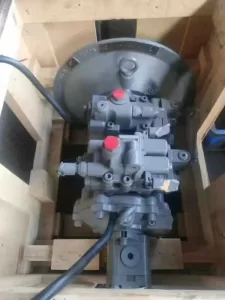Understanding the Inner Workings of Hydraulic Pumps
Hydraulic pumps are essential components of hydraulic systems, providing the power needed to move fluids and generate hydraulic pressure. These pumps play a vital role in a wide range of applications, from heavy machinery and industrial equipment to automotive systems and aircraft. In this article, we will explore the inner workings of hydraulic pumps and how they function to generate hydraulic power.
At its core, a hydraulic pump works on the principle of converting mechanical energy into hydraulic energy. It accomplishes this by utilizing the force exerted by a rotating mechanism, typically an electric motor or an internal combustion engine, to move fluid from a low-pressure reservoir to a high-pressure system.
Types of Hydraulic Pumps:
There are several types of hydraulic pumps, each with its own unique design and operating characteristics. The most common types include gear pumps, vane pumps, and piston pumps.
Gear Pumps: Gear pumps consist of two meshing gears, typically a larger drive gear and a smaller driven gear. As the gears rotate, fluid is trapped between the gear teeth and the pump housing, creating a positive displacement. The fluid is then forced out of the pump, generating hydraulic pressure.
Vane Pumps: Vane pumps use a rotor with vanes that slide in and out of slots within the rotor. As the rotor rotates, centrifugal force pushes the vanes outward, creating chambers that draw in and trap fluid. As the rotor continues to rotate, the fluid is forced out, generating hydraulic pressure.
Piston Pumps: Piston pumps utilize reciprocating pistons within cylinders to displace fluid. The pistons are driven by a swash plate or a cam mechanism, which causes them to move back and forth. As the pistons retract, they draw in fluid, and as they extend, the fluid is forced out, generating hydraulic pressure.
Pump Components:
Hydraulic pumps consist of several key components that work together to facilitate the pumping action:
Inlet: The inlet port allows fluid to enter the pump from the low-pressure reservoir or system.
Outlet: The outlet port is where the pressurized fluid is discharged into the hydraulic system.
Housing: The pump housing encloses the internal components and provides support and protection.
Impeller/Rotor: The impeller, rotor, or piston assembly is responsible for creating the pumping action by displacing fluid.
Seals: Seals help prevent leakage of fluid between moving parts and maintain pressure within the pump.
Control Mechanism: Some hydraulic pumps incorporate control mechanisms, such as adjustable swash plates or variable displacement mechanisms, to regulate the flow and pressure output.

Pump Operation:
The operation of a hydraulic pump involves a series of repetitive steps:
Priming: The pump is initially primed by filling it with fluid to ensure proper lubrication and minimize air pockets.
Intake: As the pump rotates, the intake or suction stroke draws fluid from the low-pressure reservoir into the pump.
Compression: The fluid is then compressed as it moves through the pump, increasing its pressure.
Discharge: Finally, the pressurized fluid is discharged through the outlet port into the hydraulic system, providing the required power for various applications.
Hydraulic pumps are the heart of hydraulic systems, providing the necessary power to move fluids and generate hydraulic pressure. By understanding the basic principles and inner workings of hydraulic pumps, we can appreciate their importance and diverse applications. Whether it’s lifting heavy loads, operating machinery, or powering hydraulic systems, hydraulic pumps play a crucial role in modern engineering and technology.


